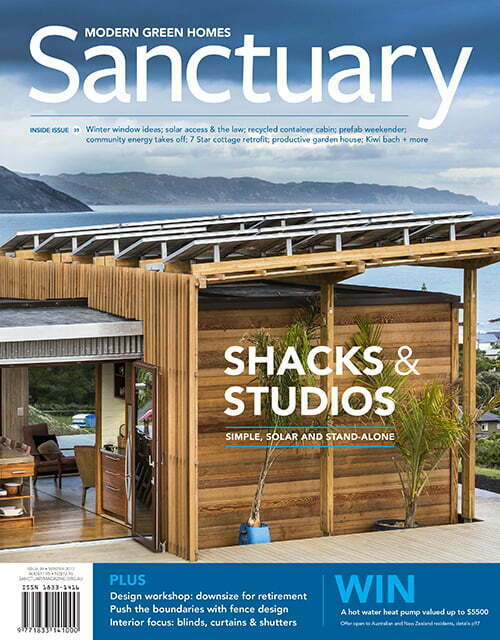Pushing the boundaries: fence materials and design
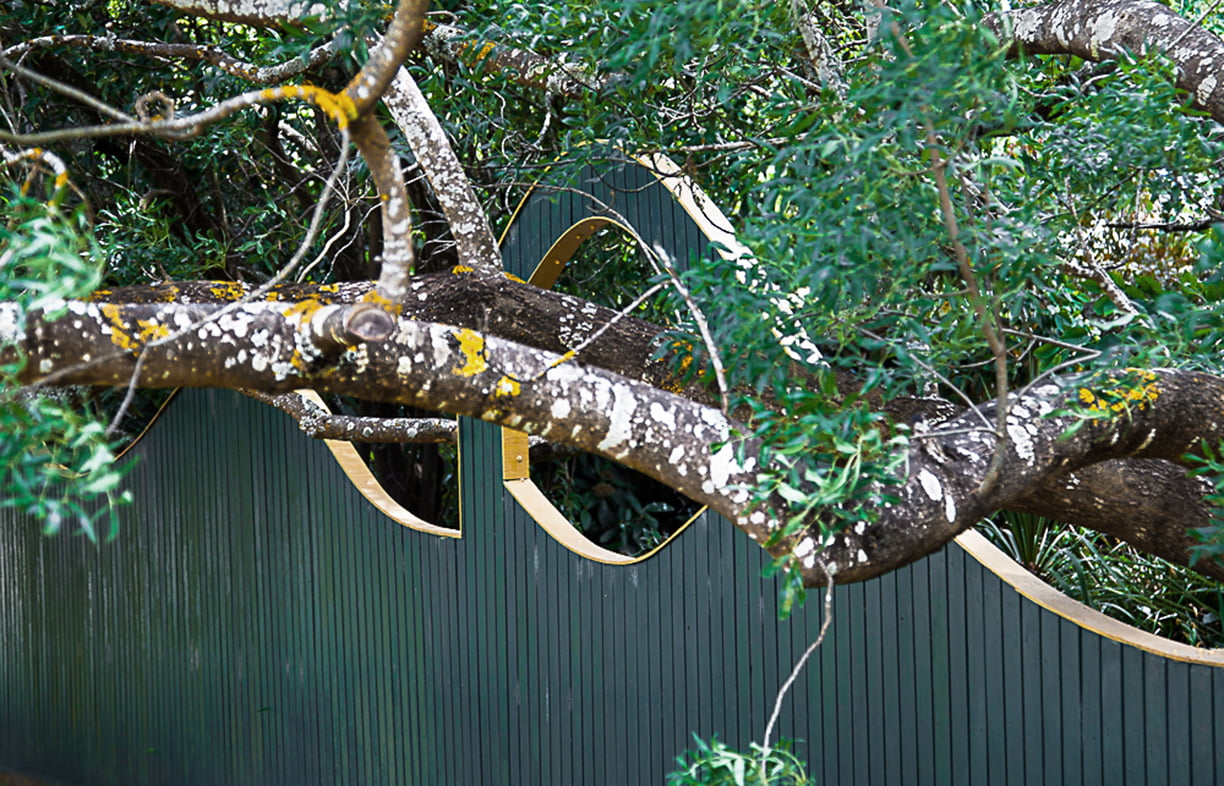
Contemporary architecture is inspiring many of us to think more creatively about house design. Mara Ripani writes that, with a little extra planning, you can push the boundaries of your fence design as well.
One of the wonderful aspects of building a home in the 21st century is the enormous freedom that exists with the design process. Fewer people are concerned with conforming to neighbourhood standards and, where possible, people are opting for innovative and creative house designs that express stories and values. With this freedom comes the option of extending one’s vision beyond the building envelope into the landscape, and right out to the very edge of the property where a new abundance of fencing options abounds.
Fencing materials
There are five principal building materials used in fencing design: wood and natural fibres, recycled plastic and wood-plastic composites, metal, stone and living plants. Perhaps the first factor that will influence your choice of material will be its sustainability credentials.
Wood and natural fibres
Before you opt for a timber fence, remember to check that it has been sustainably sourced from a managed forest (for example, has Forest Stewardship Council accreditation) or is recycled or salvaged. Hardwoods are the best choice, if you can afford them and they are certified for sustainability.
Has the timber been treated with a chromated copper arsenate (CCA) wood preservative or an alternative eco treatment? Unfortunately the Australian Pesticide and Veterinary Medicines Authority provides little inspiration for eco alternatives, stating that ‘they still pose environmental and health risks’. All wood degrades due to attack from fungi, bacteria and insects (termites) and extreme weather. Wood in direct contact with moist soil is particularly susceptible, and a timber fence’s longevity can be extended if placed on an above-soil level concrete base, with capped posts. Wood will grey off within a few years or within six months in some locations if treated with a stain or oil product, even if it contains a UV shield. The process will take longer if a skin coat is used, but be prepared to sand and strip the wood back when it comes to repainting.
One interesting newly developed timber product is Accoya: fast-growing, abundant softwood that is acetylated to stop rot from taking hold. The process is non-toxic and gives the timber durability and rot resistance similar to the toughest hardwoods.
Bamboo fences are another option. Bamboo is usually supported by hardwood or softwood posts and a top and bottom rail which act as a frame. The bamboo fills the space between. Like wood fences, bamboo needs to be oiled or painted with a clear coat of varnish (every year in the case of bamboo) to ensure longevity. There is a range of products on the market, from thin bamboo to very large bamboo poles. The larger, older bamboo is stronger than juvenile bamboo and will therefore last longer. There are also different bamboo species to choose from; Moso and Henon are two species often used for fencing due to their longevity and strength.
Other natural fibres that can be used for fencing include brushwood or hazelnut, willow or walnut wattle. Wattle fences in particular are experiencing a revival as people return to artisan crafts once prized and valued.
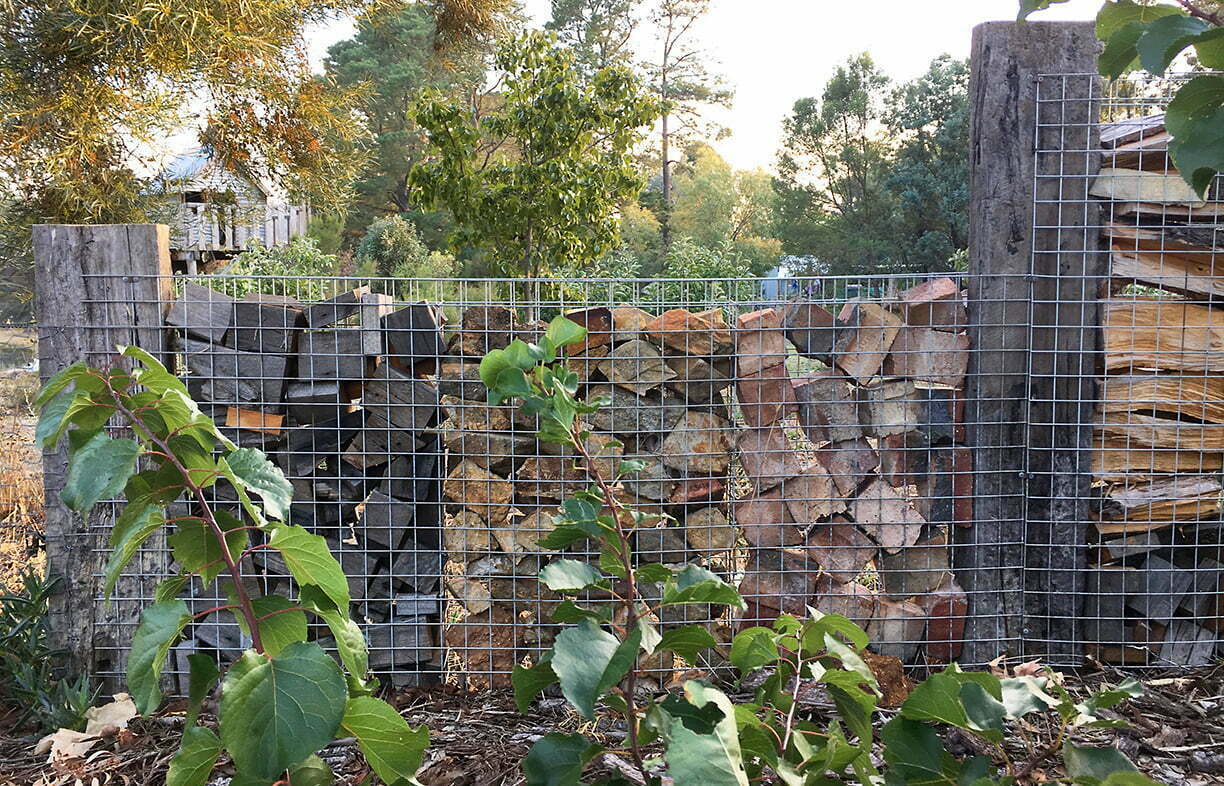
Recycled plastic and wood-plastic composites
Recycled plastic and wood-plastic composites (WPCs) are becoming more readily available for a variety of external applications including fencing and decking. They have the twin advantages of giving another life to waste products and being considerably more durable than plain wood; WPCs have a look and feel closer to that of timber than plastic-only products. They can both be cut, drilled and planed just like timber, don’t crack or splinter, and do not require painting, oiling or other maintenance.
Metal
Metal fences, made from steel sheet, aluminium or cast iron, are also available. Unlike wood they are non-renewable – although they are very recyclable – and have high embodied energy costs. For example, air-dried sawn hardwood has a very low embodied energy cost of 0.5 MJ/kg, compared to galvanised steel 38.0 MJ/kg and aluminium 170.0 MJ/kg. (Your Home explains that the embodied energy of a product is the total energy used to mine/log, process, manufacture and transport that product to its end use.) Countering this, however, is the fact that metal fences will outlast a wood fence several times over, and a greater mass of wood is required to make an equivalent fence compared to steel or aluminium. Plus, recycled aluminium and steel actually have lower embodied energy than equivalent virgin materials and are available from some suppliers, but they can be hard to find.
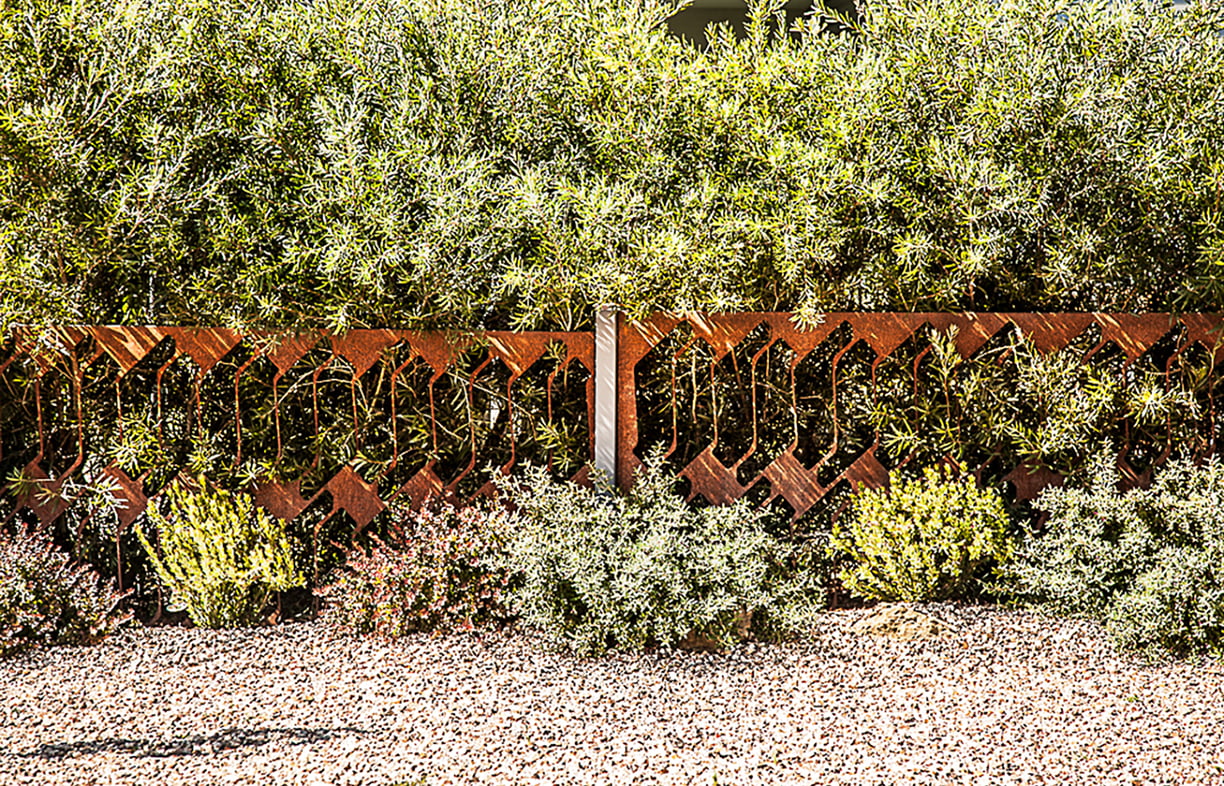
Aluminium is lightweight, rust proof and available in different colours. Steel, if galvanised, is also protected from rusting and may be preferred to aluminium where strength is favoured, such as in a commercial setting. These days, though, many people are choosing untreated steel sheet such as Corten for the beautiful aesthetic appeal of the rust. There are also a few wrought iron makers who are offering bespoke fences and gates with dreamy patterns and designs. Another option for an interesting effect is to source patterned metal sheets from laser cutters and reuse them as fencing material.
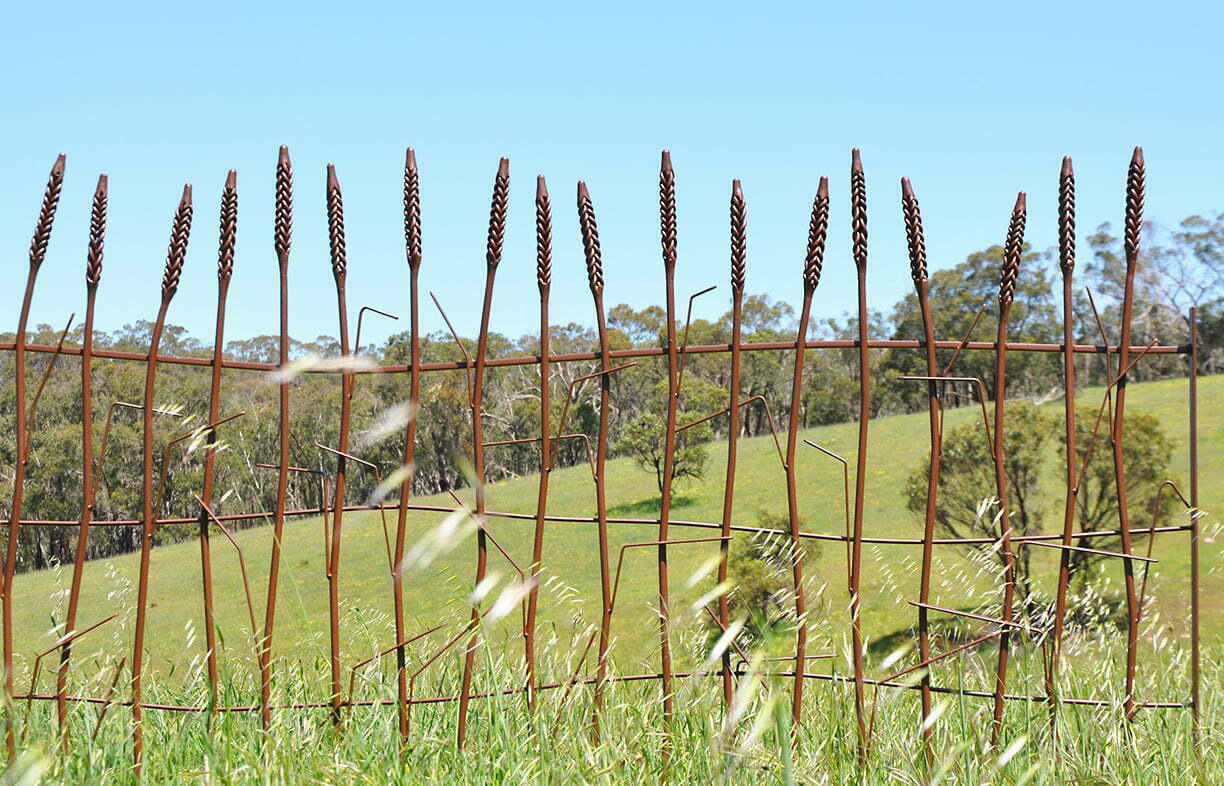
Stone
If using stone then be aware it will most likely have come from a quarry, and hence a stone fence rarely champions sustainability. However, in some country areas landowners will have access to a great deal of stone as new dams, sewerage systems and house foundations uproot rocks. Stone walls are often very beautiful and will last beyond your lifetime. Dry stone walls take a long time to build and require a skilled artisan; adding mortar reduces costs and time. An alternative is gabion walls, in which rocks are enclosed within a wire cage. These look really easy to build and give the impression that anyone can put one together, but they too need a bit of know-how to achieve a beautiful aesthetic result. Rocks are not simply thrown in but laid in a considered fashion, with the flat surface of the rocks facing out to achieve a clean facade. To ensure a high quality and durable gabion wall, choose a high-gauge wire, as low-gauge wires will tend to sag.
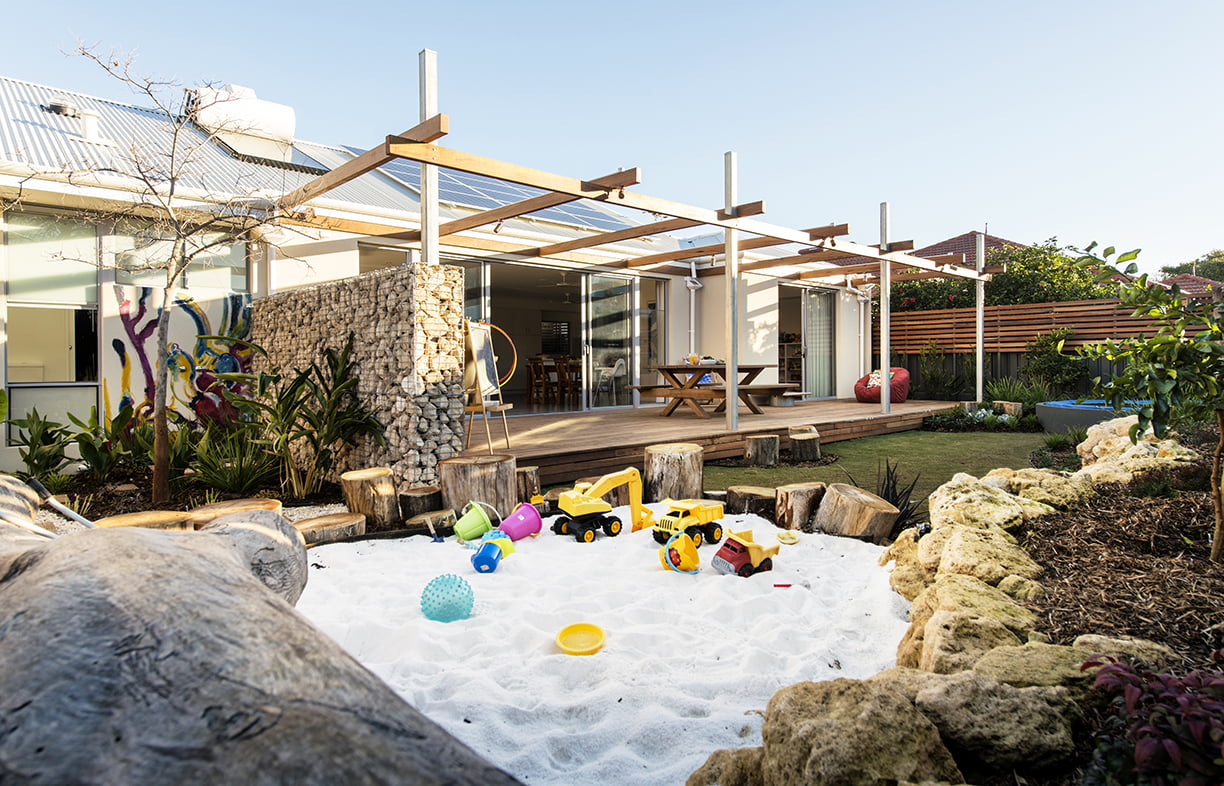
Alternatively, if you have a significant property and want to keep your view and sightlines, try building a ha-ha (a type of masonry retaining wall). This involves creating a channel along the length of the boundary and building a retaining wall; the channel gap will be just wide enough to make it impossible for animals or humans to clear the retaining wall.
Living fences
The most sustainable fence of all must be a living one and hedges are at the top of the list. Hedges are shrubs grown closely together and pruned once to twice a year to create the kind of clean line one would normally associate with a fence. The hedge height and depth depends on both the natural height and girth of the mature shrub and on the amount of pruning you do. Cypress, lilly pilly, pittosporum, photinia, elaeagnus, callistemon or murraya can be hedged, to name a few. Your choice will be reliant on climate, wind and rainfall, the height desired and soil type (clay, sand, loam); and of course your desired colour and texture.
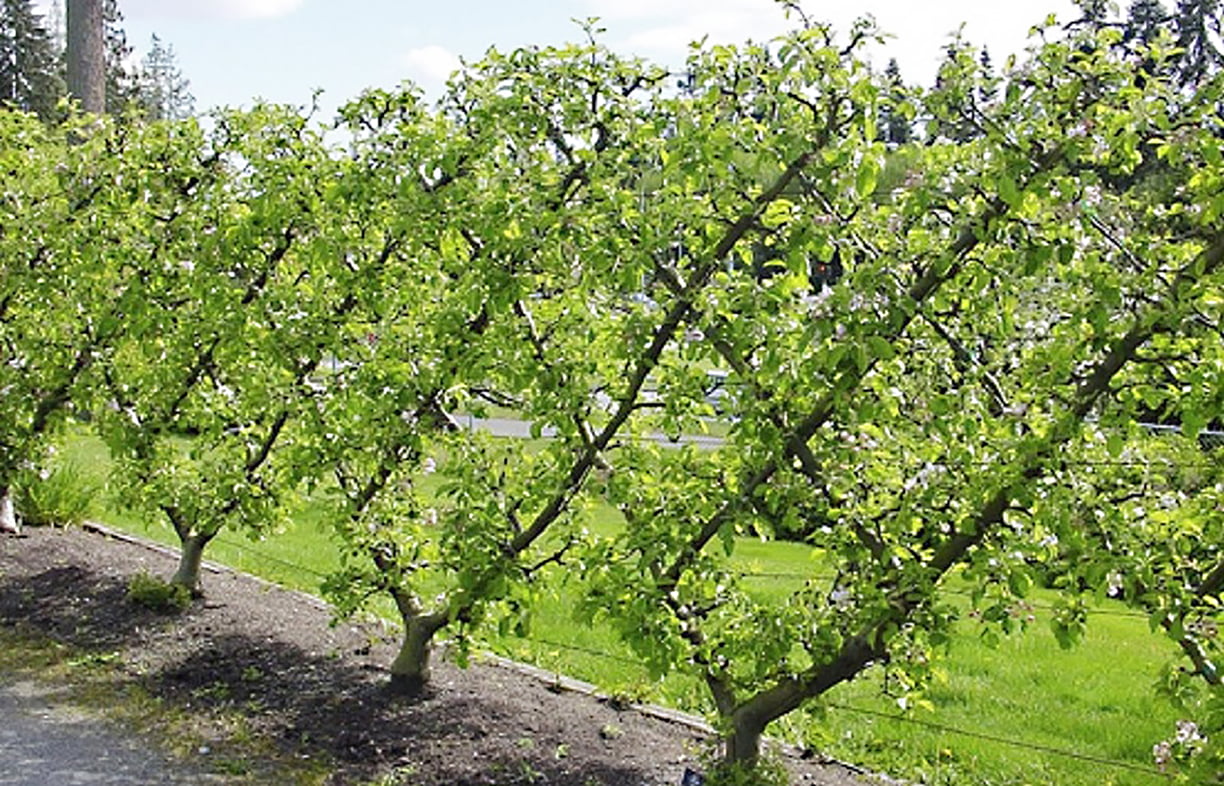
Evergreen climbing plants that need structural support to grow will also create a very beautiful living fence. Muehlenbeckia, lonicera, clematis, hardenbergia and passiflora are possible choices. Make sure that when choosing a climbing plant you ask if it is evergreen in your climate, as some lose their leaves in cold weather but retain them in warmer climates.
Alternatively, if you live in the country you can plant hawthorn, blackthorn, field maple, hazel oak, sycamore or ash (unless it is likely to become an invasive weed in your area) and use traditional hedge laying techniques to create a fence. At first this might seem like an unlikely idea, but hedges created in this way are said to outlast every other fence option.
Both hedges and climbing plants need irrigation support to help them establish, and good soil preparation. They also require lots of compost to improve drainage and water retention. Unlike any other fence material, hedges and climbing plants absorb carbon, release oxygen, trap airborne particulates and provide habitat for insects, birds and small reptiles. Their colour range varies from dark green to vibrant lime and red or silver foliage.
Living fences create a dynamic boundary that’s interesting all year round and will add great value to any garden.
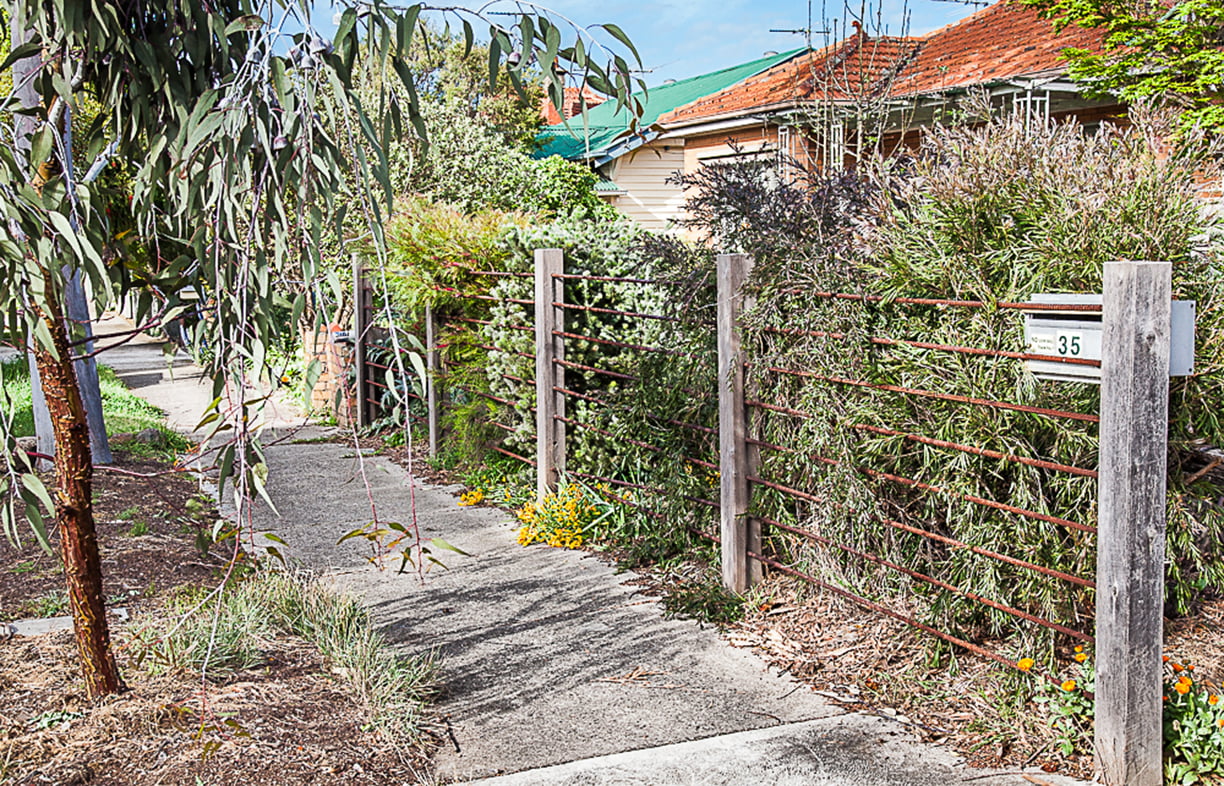
Is your fence to keep kids or pets in, or strangers out? Is it a visual delineation of what is mine and what is yours, or what is privately owned and what is public? Is it for visual privacy? Or perhaps a frame on which plants can be grown? Some homeowners will see no need for a fence along their street frontage, only to later find themselves urgently building one as their crawling baby becomes a toddler. Others will not feel secure without one. On the other hand, residents who have found kindred spirits living next door might pull down an existing fence, cut a gate through it or install a stile to create easy access to an afternoon cup of tea. For those living in the country with pastured animals, it is a brilliant idea to design fences that keep livestock in but allow free and easy movement for wildlife. (Wildlife-friendly fences do not use barbed wire, leave a gap at the bottom for echidnas, wombats and pregnant kangaroos to slide under, and reduce the height of the top wire to allow those that can jump a safe passage.)
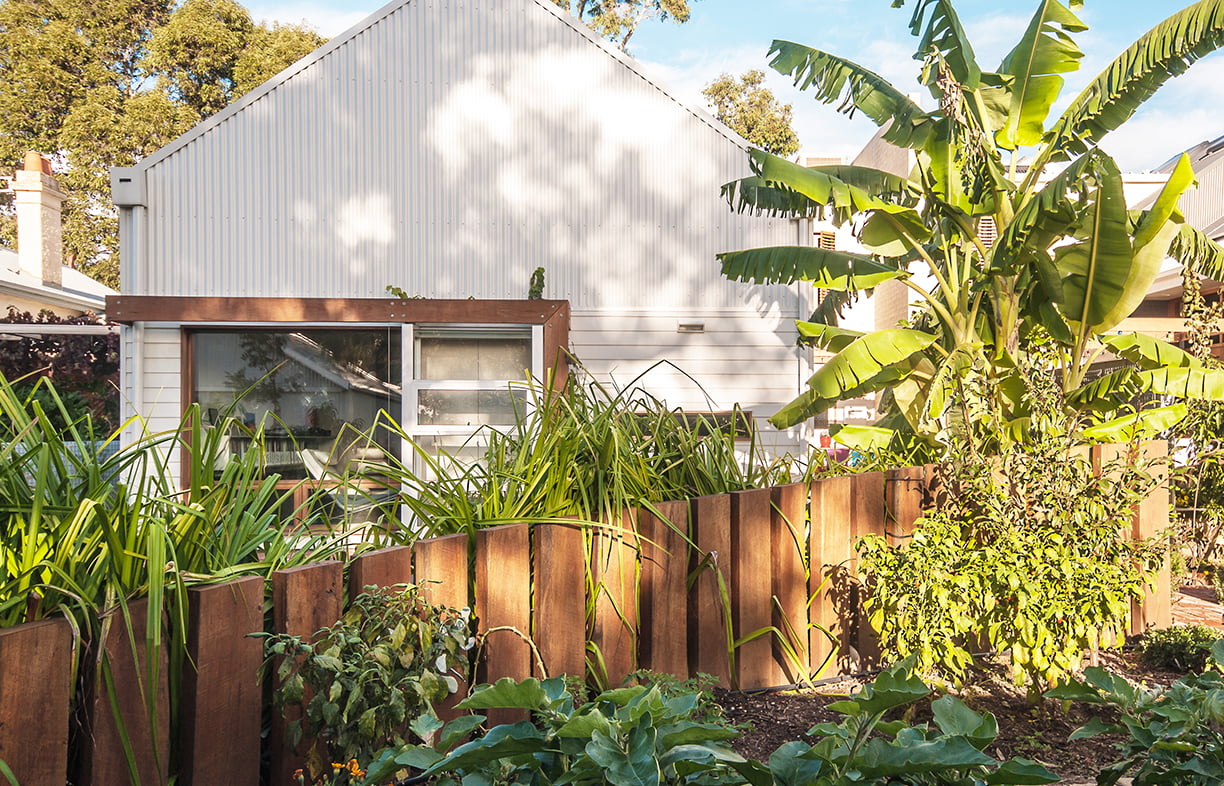
Neighbours and planning laws
In a majority of cases, a block of land, whether it be country or city, will have four boundaries. Three of these will be shared with your neighbours and the fourth will be shared with the street (there are exceptions to this, such as corner blocks). The material, height, design and cost of fences shared with neighbours will need to be agreed between you should they need replacing. As part of the process, the exact boundary must be determined (some existing fences have not been erected on boundary lines) and may require you to refer back to your Land Title or engage a licensed surveyor. A verbal agreement is generally all you need to be able to proceed with the works.
There will be situations, however, when you can’t get in touch with your neighbour. If this is the case you will be expected to ‘make reasonable enquiries’ and to contact your council to gain a neighbour’s contact details and issue a Fencing Notice outlining proposed works. If you aren’t able to reach an agreement with your neighbour, you cannot proceed. Every state has either a disputes settlement centre or a legal service centre to help you, as fencing disputes are not uncommon.
Fence quality and the law
The fencing laws throughout Australia tend to be similar and outline that ‘you and your neighbour have equal responsibility for the dividing fence on your land and must contribute in equal shares to a dividing fence’. However, if one landowner prefers a more expensive fence or an above ‘standard’ height fence then the difference in cost must be covered by that party. The process may be slightly different with each council or state, so please get in touch with your local authority to confirm the correct procedure.
With the fence facing the street, in most cases, unless a heritage overlay deems your home or the character of the street significant, you are free to go wild and creative and build the fence of your dreams.
More outdoor articles
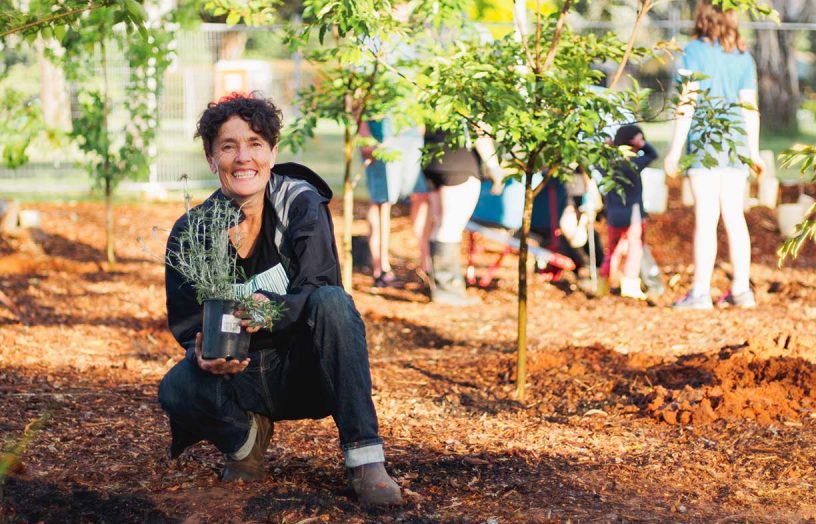 Outdoors
Outdoors
Pocket forests: Urban microforests gaining ground
Often no bigger than a tennis court, microforests punch above their weight for establishing cool urban microclimates, providing wildlife habitat and focusing community connection. Mara Ripani goes exploring.
Read more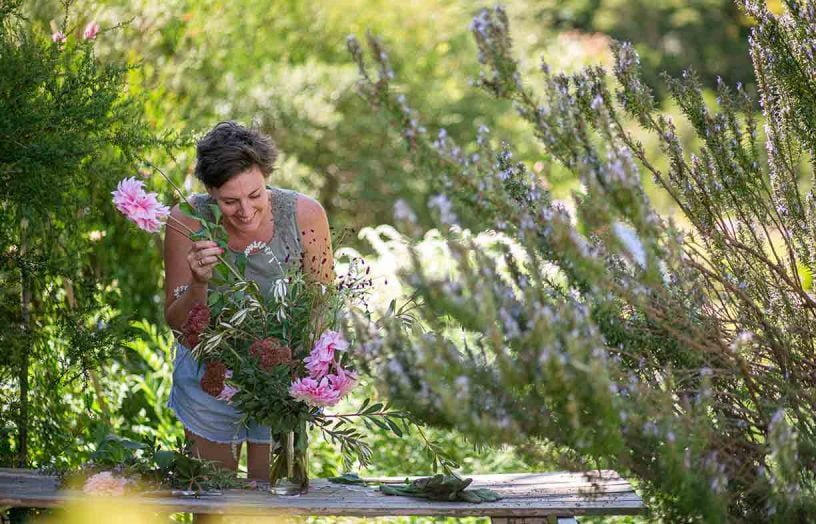 Outdoors
Outdoors
Nourished by nature: Garden design for mental health and wellbeing
There’s plenty of evidence that connection with nature is beneficial for both mind and body. We speak to the experts about designing gardens for improved mood and wellbeing, and what we can do at home to create green spaces that give back in a therapeutic way.
Read more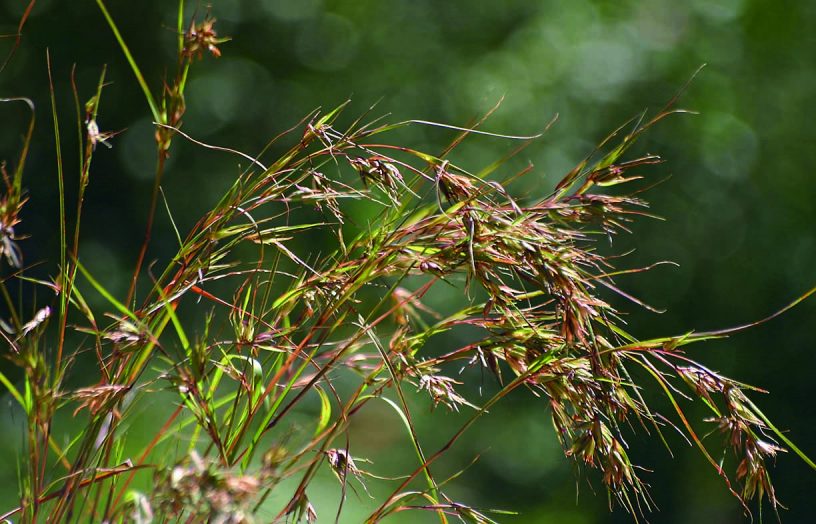 Outdoors
Outdoors
In the line of fire: Plant list
Download a list of popular native species to accompany our Sanctuary 51 article 'In the line of fire: Garden design to reduce the threat of bushfire'.
Read more

